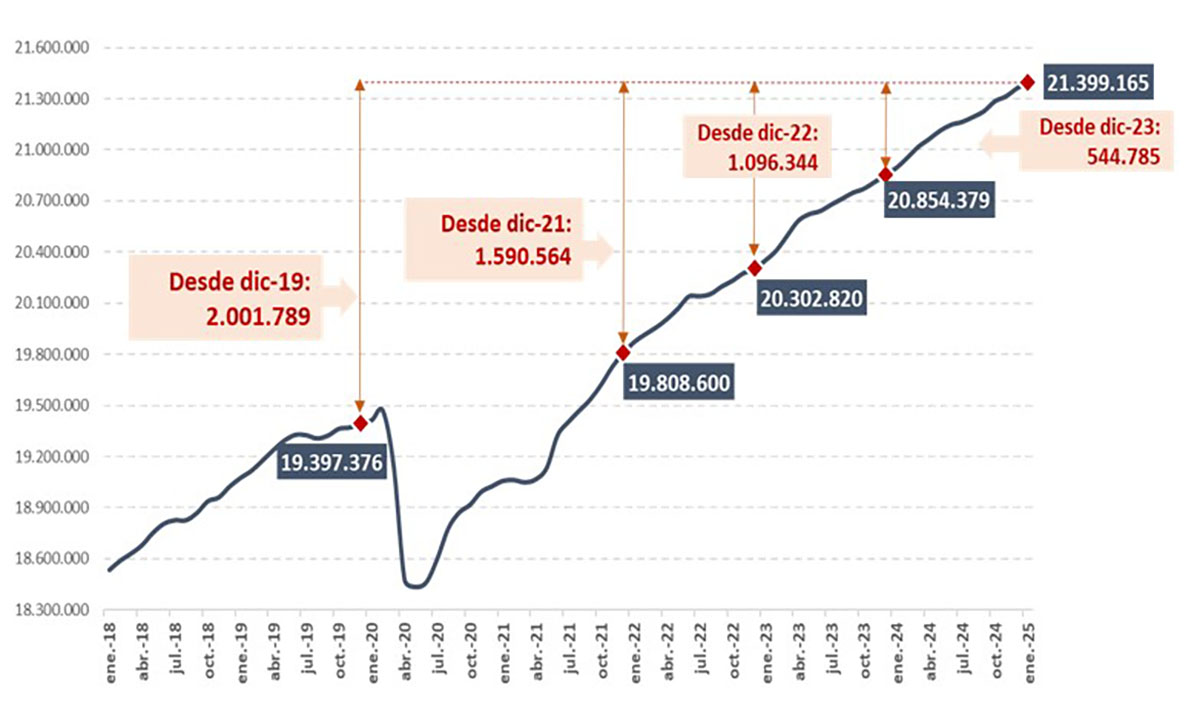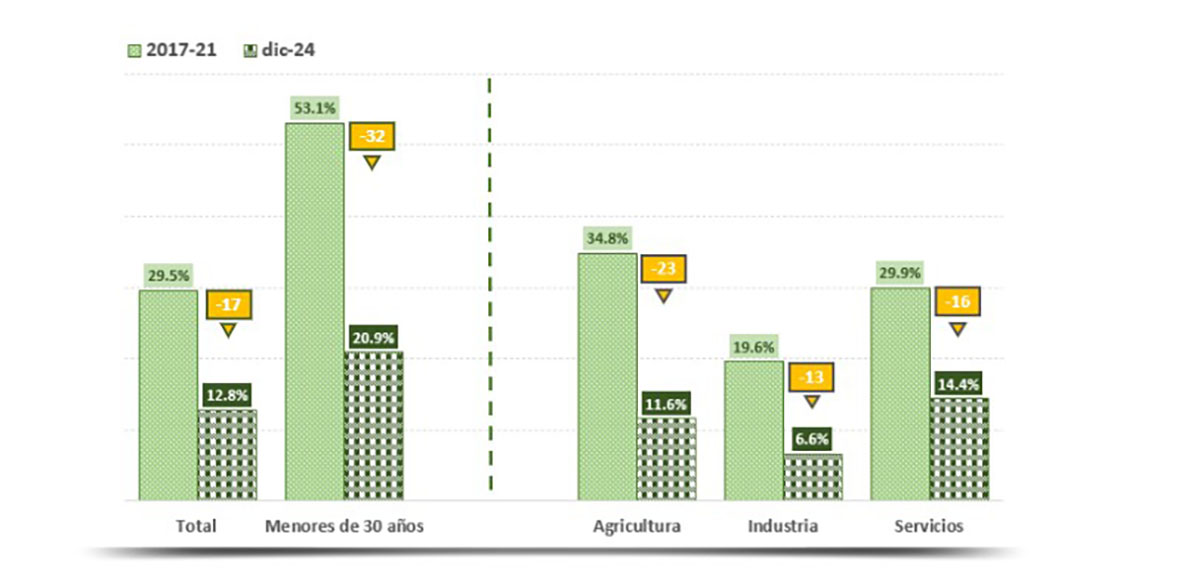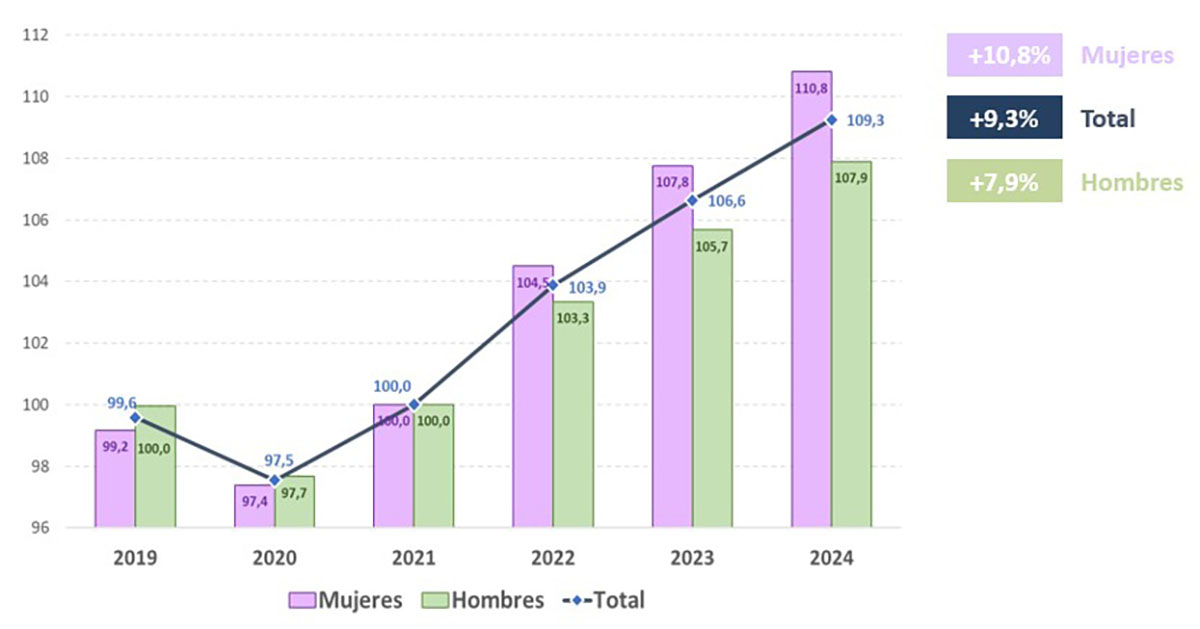In January, 35,000 new contributors joined the Social Security system in seasonally adjusted terms with 501,000 joining in the last year
News - 2025.2.4
Social Security registered 21,399,165 contributors in January, if we discount seasonality and the calendar effect. This represents an increase of 501,324 workers over the last year and 35,758 more than in December, bringing this series to its highest ever level.
The average number of contributors (original series) was 21,095,814, with 242,148 fewer than in December, that is -1.1%, in line with December's performance in the last two years. However, this is the highest number of contributors in the January series and, in year-on-year terms, the average number of contributors has increased by 491,053 (+2.38%). These figures mean that, compared to the pre-pandemic level, more than two million people have joined the Social Security system.

In a year-on-year comparison, most sectors in the General Regime (+2.6%) gained contributors, particularly: Transport and Storage (+7.2%), Agriculture, Livestock, Hunting, Forestry and Fishing (+6.1%), Arts, Entertainment and Recreation (+4.4%) and Hotels and Restaurants (+4.1%).
The number of self-employed workers, meanwhile, is close to 3.4 million (Special Regime for Self-Employed Workers and Special System within the Special Regime for Self-Employed Workers), with 3,368,950 self-employed workers, after an additional 41,531 workers joined in the last year (+1.25%). In a year-on-year comparison, 46,800 more workers have been registered in the Special Regime for Self-Employed Workers alone, that is, excluding self-employed agricultural workers, and the figure exceeds 3.2 million (excluding the Special System within the Special Regime for Self-Employed Workers). In the last year, Information and Communications and Professional Scientific and Technical Activities increased by 9.5% and 4.4%, respectively.
Higher employment growth than other major European economies
Job creation in Spain (+8.5%) exceeds that of the major European countries (Italy, +5.4%; France, +2.3%; Germany, +1.6%) since the end of 2021, before the entry into force of the labour reform.

Better job quality in three years of labour reform
If we analyse the labour market since the labour market reform, which started in 2022, it is clear how much it has changed: there are more jobs and almost 3.7 million more workers with permanent contracts since then, an increase of 33.3%.
Not only are there more jobs, there is also a noticeable improvement in the quality of these jobs. There are currently more than 14.7 million people in employment with permanent contracts, of whom more than 9.7 million work full-time. This represents almost 3.7 million more contributors (3,667,547) with permanent contracts since the approval of the labour reform. The number of permanent-intermittent employees, however, has stabilised and they now account for only 5% of the total number of employees.

While the share of temporary workers is at historically low levels (12.8%), seasonal activities have recorded the largest fall in temporary employment and there is no substitution of permanent-intermittent employees. For example, in agriculture, in the years before the labour reform the percentage was 34.8% and it now stands at 11.6%.
This change has also affected the youngest workers, who now account for 20.9% of temporary contracts, whereas previously they accounted for more than half of the contracts of this kind signed.
In addition, the growth of high value-added sectors, such as Information and Communications and Professional Scientific and Technical Activities, should be highlighted. These activities show significant growth since 2021 (with almost 300,000 more workers) with increases of more than 15%, compared to the national average of 10.4%.

Since the entry into force of the reform, women's employment has also improved. Since the previous year, the number of women contributors has grown by 10.8%, compared to 7.9% for men. This month, 9,975,868 women were in employment, representing 47.3% of the total number of workers. This is the best level of female employment in a January in the series, compared to the pre-reform level.

Non official translation





